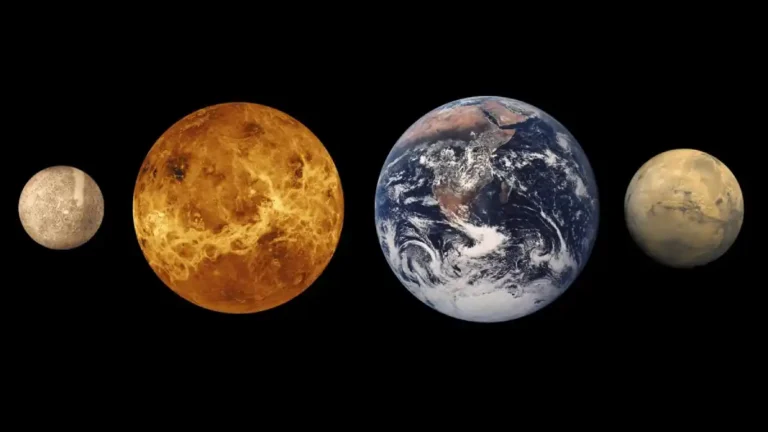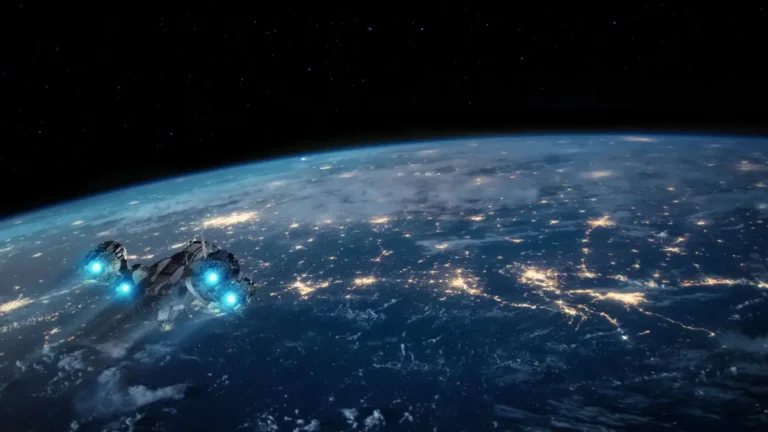Why the Planet Everyone Fears May Be the Best Bet for Space Industries
A Terra Methanum Dispatch
Forget dusty red Mars and its overhyped potential for aquaponic broccoli farms. If you’re looking for a proper filling station on the road to the stars, there’s only one address that matters: Venus. That sweltering, acid-drenched goddess of a planet might be a deathtrap for astronauts, but for rockets? It’s a damn paradise.
Let’s recap. In an earlier post, I laid out why methane is the dream fuel for spacefarers. It stores well. It’s not a cryogenic diva like hydrogen. And if you have the nerve and the nerve endings to go sniffing around hostile planetary atmospheres, it’s surprisingly available. Especially on Venus.
This post first appeared in 2020, back when I still entertained hope that rational arguments might sway public sentiment. I’ve since remastered it—sharpened the edges, clarified the threat, and realigned it with the Grimwright ethos: use what works, discard the rest, and always—always—question the narrative. The date remains unchanged as a historical marker. The content does not.
Back in 1978, the Pioneer Venus Multiprobe dipped its metallic toes into the planet’s atmospheric soup. And what did it find? Methane. A lot of it. Not “cow fart” levels, not “pipe leak in downtown Rotterdam” levels—but orders of magnitude more. On Earth, atmospheric methane clocks in at less than 2 parts per million. On Venus? Try 1,000 to 6,000 ppm. That’s 0.1% to 0.6% of the atmosphere, which may not sound like much until you remember that Venus’ atmosphere is about 90 times denser than Earth’s.
Let that settle in for a second.
That means you’re looking at between 45,000 and 270,000 times more methane per cubic meter than what you breathe every day here on our soggy home world. Venus is practically coughing up rocket fuel.
Naturally, scientists were baffled. For decades, methane was considered a biological signature. Organic. Life-made. The product of things that burp and rot. But if you’ve been paying attention (and I know most of you have), you know better. You’ve read Terra Methanum, where I pointed out that the vast majority of Earth’s methane likely comes from abiotic sources. It bubbles up from the depths of the Earth, the result of geochemical pressure-cooking, not microbes in mud.
Venus, by all available evidence, is still geologically active. And while it lacks breathable air, it makes up for it with a thick, brooding atmosphere that doesn’t allow methane to photodissociate the way it does here. On Earth, methane gets broken down fast—oxygen and UV light team up to erase it. But on Venus? No oxygen. Opaque clouds. Methane just sits there. Waiting. Accumulating.
So where does that leave us?
It leaves us with a massive, ready-made hydrocarbon buffet floating above the hottest planetary surface in the solar system. Think about that. You’ve got methane production, methane accumulation, and a natural insulation system that prevents the gas from breaking down. It’s almost like someone up there wants us to build a fueling depot in the sky.
Now before we start launching tanker blimps to LEO, let’s remember: this is based on a probe from 1978. Some of the readings were—let’s be generous—imprecise. We need a follow-up mission. A real one. Something with instruments built after the disco era. A balloon-based probe that hovers at 55–60 km altitude and samples the atmosphere like a wine snob in a cellar.
Even if the methane readings were a fluke (I doubt it), no worries. Venus still wins. Extract hydrogen from the planet’s sulfuric acid rain (yes, really), and carbon from the CO₂ soup, and you can synthesize methane on-site using the Sabatier process. The ingredients are there. In spades.
Now, let’s talk hardware.
Where do you put the base? You don’t want to build anything on the surface unless you’re fond of molten lead aesthetics. But go up about 55 km, and the temperature and pressure are actually… livable. As in: you could design a pressure suit for it that doesn’t double as medieval torture gear. This is the Goldilocks zone of Venus, floating in the clouds like some forgotten steampunk utopia.
In fact, you don’t even need a solid base. You float it.
The Venusian atmosphere is mostly CO₂. That’s heavy stuff—molecular weight of 44 g/mol. You know what that means? If you fill a balloon with oxygen (molecular weight ~16 g/mol), it floats. Fill it with hydrogen (molecular weight ~2 g/mol), and it soars. And no, it won’t explode. There’s not enough oxygen in the atmosphere to ignite anything. All the fun of hydrogen without the Hindenburg.
So you build a floating platform, high above the death-oven below, powered by temperature differential turbines. You harvest sulfuric acid, strip out hydrogen, convert CO₂ into methane and oxygen, and liquefy the result using Venus’ built-in heat gradients. The entire thing becomes a self-sufficient refueling station hovering above a planet that looks like a goth fever dream.
Launches? Easy. You’re already halfway to orbit, and gravity on Venus is only slightly less than Earth’s. Set up a secondary launch pad 100 km up, travel between cloud bases via blimps, and you’re good to go. No Cape Canaveral required.
And here’s the kicker: Venus’ atmosphere is also a treasure trove of other volatiles. Nitrogen. Sulfur. Carbon. Hydrogen. Hell, even trace metals in the clouds. The same stuff you need to make plastics, fuel, structural composites, and maybe even some very smug tweets from orbit.
Let’s be blunt. Terraforming Venus is a joke. Mars too, for that matter. Turning entire planets into playgrounds for Earth’s emotional baggage is a sci-fi hallucination. But using them? That’s the hard-nosed, industrialist space dream. In situ resource utilization—strip-mining the solar system for its best bits—is where the real action is.
Venus has all the pieces. Methane or no methane, it’s the best damned spot in the inner solar system for setting up shop. It’s close to Earth. It has insane solar energy potential. And it may be the last place you’d expect to find the building blocks of space civilization… which is precisely why it’s worth watching.
So Elon, Jeff—listen up. Mars is dead weight. The future of off-world industry is a floating fuel depot above hell’s front porch.
And it smells like methane.




